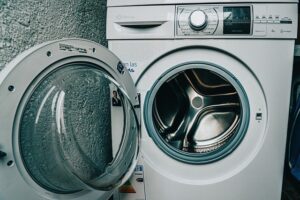You must have come across a number of examples where the conversion of kinetic energy to chemical energy takes place, but do you all know how energy is transformed in this case?
The kinetic energy of the molecules first generates heat energy due to friction and abrasion. This energy may be converted into some other forms of energy to obtain the chemical energy from the system.
How are kinetic and chemical energy related?
The agility of the atoms results in the creation of chemical energy.
If the atoms will start moving with the imparted kinetic energy, then the molecules will break the bonds and the system will start conducting producing the chemical energy.
One of the similarities between the both is that the kinetic energy of the object and chemical energy produced will generate heat energy.
How is Kinetic Energy converted to Chemical Energy?
If the molecules possess the kinetic energy then this energy will be converted into the heat energy due to the agility of the particles.
This heat energy will be responsible to break the bonds between the atoms and the formation of a new bond. A large amount of energy is released as the bonds break which is a stored chemical potential energy of the atoms.
When Kinetic Energy is converted to Chemical Energy?
With the rising temperature of a system, the movement of the molecules increases and they move in a random motion.
Along with the increasing temperature, the heat energy is supplied to the bonds between the atoms to break releasing chemical energy. The amount of heat energy required to break the bonds between the atoms to obtain chemical energy depends upon the type of bond and the strength of the formation of bonds.
Where is Kinetic Energy converted to Chemical Energy?
The kinetic energy is converted to chemical energy in a system producing heat energy.
The object moving with the kinetic energy undergoes frictional and mechanical force and abrasion along with intermolecular forces, this generates heat energy.
Kinetic Energy to Chemical Energy Formula
The kinetic energy of any object or particle is given by the equation
The heat transferred to the material to obtain chemical energy is
Where m is the mass of the object
c is the specific heat value
is a change in temperature
The specific heat is then the energy required per unit mass of the object.
Hence,
The heat energy loss and gain in the chemical reaction are the same. The heat energy produced from the kinetic energy is utilized for a chemical reaction to take place.
Kinetic Energy to Chemical Energy Generator
There is a number of devices that convert the kinetic energy of the object into chemical energy which is used to charge the batteries. While riding a bicycle, any vehicle, or walking, the kinetic energy can be converted into chemical energy. The heat generated is used to obtain chemical energy. Many sensors are also used to sense the motion to generate some other form of energy.
Kinetic Energy to Chemical Energy Efficiency
The efficiency is the ratio of the energy given out to the energy supplied as an input. The object is said to be more efficient if less energy is utilized to do the work and the energy given out is more.
And it is calculated in terms of percent as
It is a ratio of the energy used to do the work to the total energy supplied necessary to do the work.
Kinetic Energy to Chemical Energy Examples
Vehicles
As the engine starts, the combustion of fuels takes place that supplies the energy to the vehicle to run the engine. As the kinetic energy of the vehicle increases, this can be used to charge the batteries. The charged particles from the combustion process move to the battery and start conducting which is used for various purposes in the vehicle.
Grinding
While grinding the pestle is in a kinetic motion which grinds the mixture into the fine chemical powder.

Erosion
The erosion caused by the running water converts its kinetic energy to chemical energy. The heavy flow of water erodes the rocks and sediments around it mixing the sand and minerals from rocks in the water streams.
Abrasion
The wind abrasion carries the small particles of sand, dust, and pollen grains along with its kinetic energy that may result in pollination and other chemical reactions to take place.
Mixture
Mixing the two or more components together involves the conversion of the kinetic energy to the chemical energy to take place.

The components mixed together will react with each other releasing huge chemical energy.
Churning
It is a way of extracting oil from seeds and grains. The surface of the rotor and the mortar rubs across each other producing the frictional force that generates heat energy that helps to degrade the substances into a fine powder and extract the oil.
Stirring
Upon stirring you set the molecules in the mixture into motion by supplying the kinetic energy to them. Upon which the molecules react with the molecules of solvent and mix well.

Centrifugal Separation
It is a way to separate the compound having different specific gravity values by means of applying centrifugal force by rotating the rotor either clockwise or anti-clockwise.
Froth Flotation
It is a method of separating the ore based on the hydrophobic or hydrophilic properties by mixing the ore in the water.
Shoes to Charge Batteries
It is a method to convert the kinetic energy of your walking into chemical energy. The kinetic energy produced by every footstep is converted into the heat energy which is then further converted t the chemical energy by charging the batteries.
Doors with Sensor
Only when you open the door, the sensor will sense the kinetic energy and convert it first into chemical energy and then to radiant energy lighting the LEDs attached to the chemical energy source.
Motion Sensor
It senses the variations in the energy reflecting from the particular area in the range of the motion sensor. If there is a change in the energy as the object in motion passes within the sensor’s range then it will turn ON the source.
Washing Machine
Here the kinetic energy of the machine is converted into the chemical energy by mixing the detergent in the water and washing the fabric.

Desk Lamb
It comes in the shape of a globe, the lamp lights up upon spinning the lamp. It has a dynamo inside the spherical structure that absorbs the kinetic energy and converts it into chemical energy to electrical energy.
Precipitation
The sediment and sand particles carried by the flowing water are dumped into the basin where it gets precipitated suspending the particles in the water which then settle down based on the density, this process is called sedimentation.
Solar Panels
The kinetic energy of the photons incident on the panels supplied the energy to the free electrons and they start conducting converting the chemical energy to electrical energy.
Frequently Asked Questions
Does the chemical energy produce heat energy?
The chemical energy is stored in the bonds of the atoms.
As these covalent bonds break this chemical energy is released in the surrounding in the form of heat energy.
How chemical energy is converted to kinetic energy?
The chemical energy provides fuel for an object to do the work.
The chemical energy generates the heat energy and power which is utilized by the object and becomes unstable and converts the gained energy into kinetic energy.
Also Read:
- How to determine chemical energy content in food
- Transformer equations working energy loss
- How to calculate energy required for ionization in plasma
- How to calculate energy in autonomous vehicles
- How to find energy in a cosmic ray observatory
- Sound energy to electrical energy
- How to find energy conversion efficiency in photonic devices
- How to measure thermal energy in geothermal systems
- Example of electrical energy to heat energy
- How to increase radiant energy efficiency in solar concentrators
Hi, I’m Akshita Mapari. I have done M.Sc. in Physics. I have worked on projects like Numerical modeling of winds and waves during cyclone, Physics of toys and mechanized thrill machines in amusement park based on Classical Mechanics. I have pursued a course on Arduino and have accomplished some mini projects on Arduino UNO. I always like to explore new zones in the field of science. I personally believe that learning is more enthusiastic when learnt with creativity. Apart from this, I like to read, travel, strumming on guitar, identifying rocks and strata, photography and playing chess.